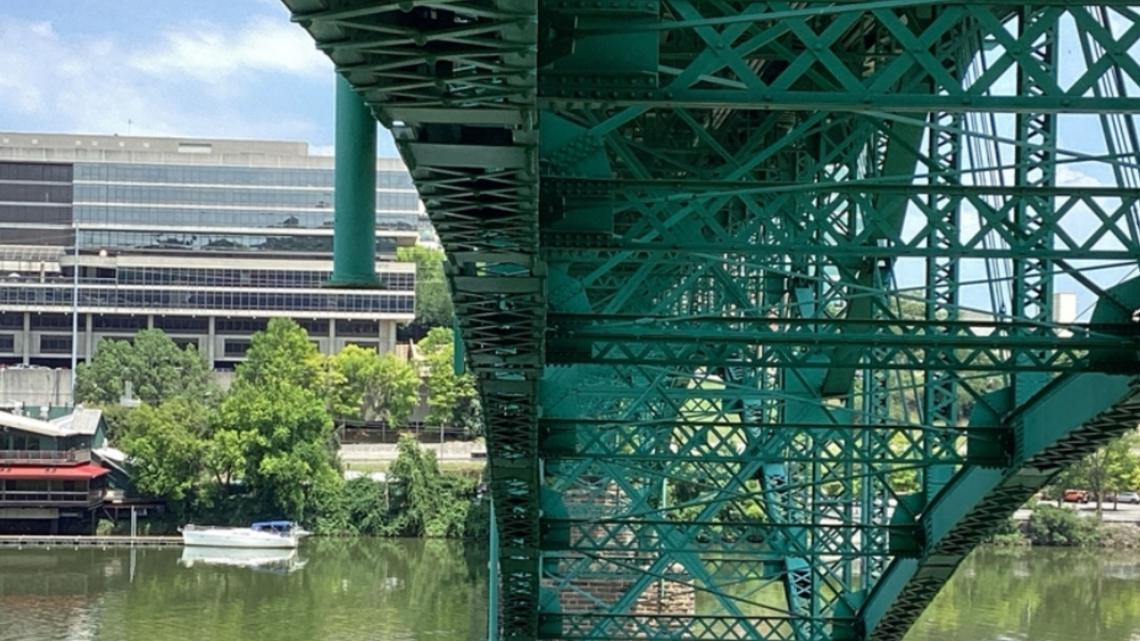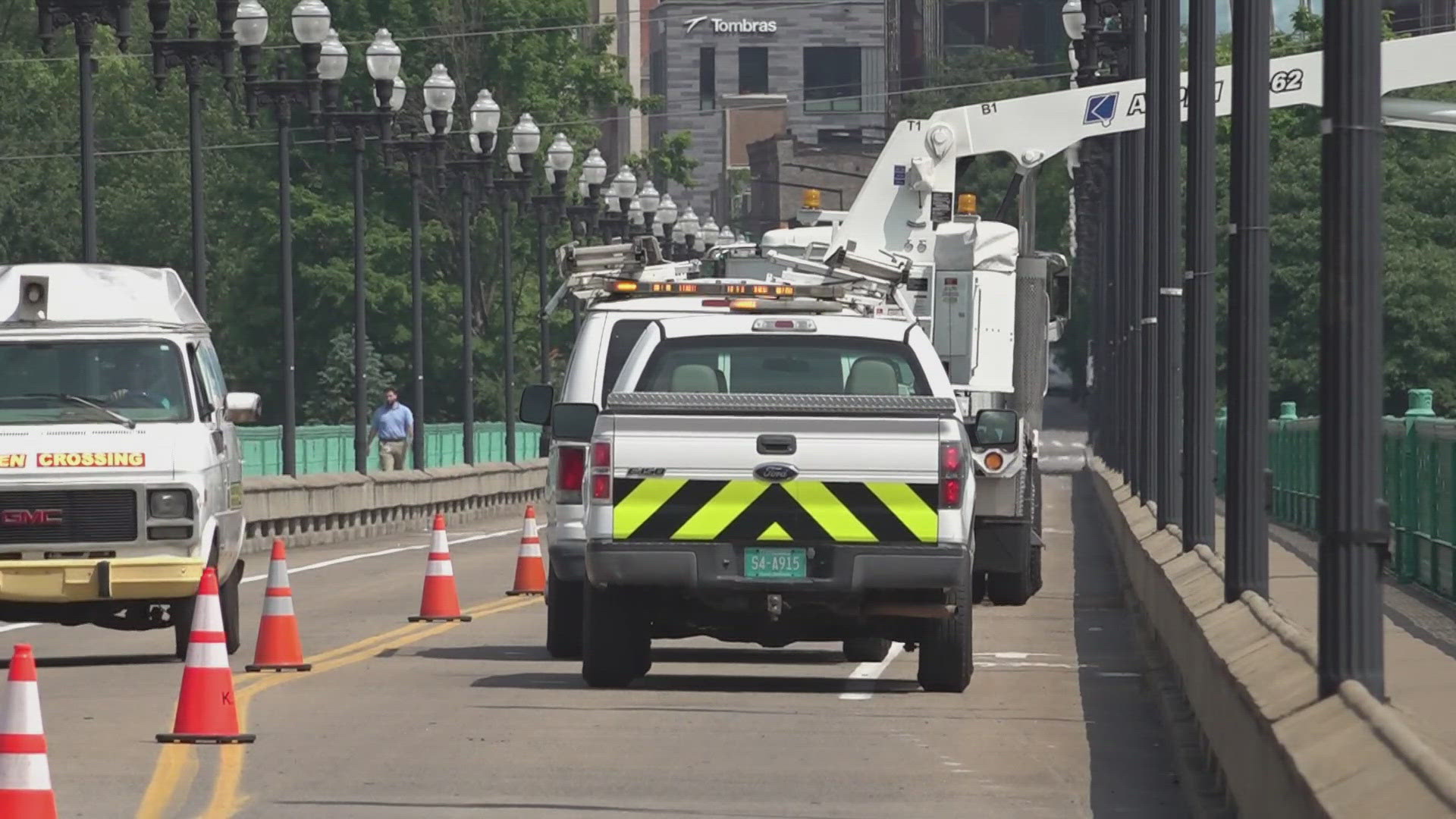KNOXVILLE, Tenn. — The Gay Street Bridge will remain closed to traffic for the foreseeable future after a critical structural issue was found with one of its trusses a few months ago.
The city of Knoxville provided an update more than two months after the bridge was closed to traffic due to structural issues discovered during an inspection. The city said it needs to conduct more studies on the 126-year-old span to determine the cost and time of repairs, and it can't reopen the bridge to cars or pedestrians using "interim measures" until it knows it is safe to do so.
"This is not the news we all hoped for," Mayor Indya Kincannon said. "But, we agree with the recommendation, as safety must be our number one priority."
Nearly 7,000 drivers go across this bridge every single day, according to the Tennessee Department of Transportation, which doesn’t account for people who walk or jog on the bridge. The Henley Bridge is open as a detour, but going that route will add about 7 minutes to most people's trips.
"We have looked at signal timing in some of the adjacent intersections to try to make that as efficient as we can, knowing that the volumes on Gay Street are eliminated," said Tom Clabo, the Director of Engineering for the City. "So it's going to be pushed out to other streets."
In late June, TDOT discovered a distorted steel truss during a routine inspection on the bridge. Several other trusses were also found out of alignment. TDOT and the city immediately closed the bridge because of the potential danger.
In the inspection reports, TDOT said the bridge was in overall serious condition because one truss had critical distortion that had gone unnoticed for nearly a decade.
"Some of the structural members are deformed or bent, is what they saw through their field inspections," said Clabo.
Clabo said the bridge undergoes inspection every two years, and in previous reports from TDOT, these were not issues.
"It wasn't in the inspection reports, had TDOT not mentioned it to us," said Clabo. "So this was really new with this last inspection report."


According to the report, TDOT said reviews of photos from prior inspections as far back as 2004 revealed the misalignment and distortion issues likely existed as far back as 2015, and possibly further. However, previous inspections of the bridge did not notice the issues and rated it as "good" most years.
TDOT told the city that there was no redundancy with this type of bridge if a truss were to fail. The city said it is working with the agency to hire an engineering consultant to develop a repair plan.
"The city will not have a cost estimate for the repairs or an estimated construction timeline until the consultant’s recommendations are complete," the city said.
Clabo says the City is working with the same consulting firm that TDOT used during the inspection, to more specifically figure out the damage and the best way to repair it.
He says the bridge is closed to cars, pedestrians, and bikers.
"We've placed the top three barricades signage, placed some concrete barriers at the end of the bridges to limit or I guess restrict any access to the bridge deck itself," said Clabo. "Whenever you see signs that say the bridge is closed, you should not access or go over those type of barricades. We've said this throughout, safety is our number one priority. And so until we can get through this analysis and either get the repairs done or through the analysis, determine that bikes and pedestrians can't access the bridge."
He says based on the consulting firm's findings, bikers and pedestrians may be able to use it... but the combined weight could also be detrimental.
"When you talk to structural engineers, when you have pedestrians involved, you've got to consider, let's just say you had an event where you had folks standing shoulder to shoulder on the bridge, that, that weight is actually a more severe weight than vehicles," said Clabo. "Even if we through the analysis can get to the point where we can open it to bikes and pedestrians, we're going to limit on the bridge deck, where you can access the bridge. So it won't be the full bridge deck. Could be a sidewalk and maybe one lane of the bridge if we can get there. We'd end up putting some kind of barrier down the center of the bridge."
The bridge is the oldest spanning the Tennessee River in Knoxville, according to the city. It was built in 1898. In 2004, the city, state and federal government spent nearly $16 million on an improvement project. Since then, the city said it has passed every inspection report until the one in June.
"It was a pretty major rehab in 2000 to 2004 time frame," said Clabo.

